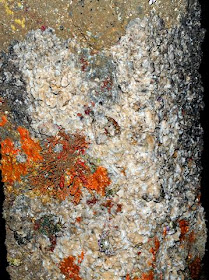It's been a while since I last checked out the tiny shores of Punggol. My last visit was at the start of the year. How is the shore doing now?
It was an evening tide where Ron, Marcus and I had a look at what lies out there as the tide recedes. The sunset glow was gorgeous against the jetty.
Punggol shore faces quite a fair bit of pressure. Firstly, it is situated just opposite Pasir Gudang in Johor (the shipping structures at the right side of the photo). Pasir Gudang is an industrial area in Johor and the Pasir Gudang port lies just opposite Punggol.
Secondly, this shore has been made more accessible through the opening of Punggol Promenade. There has many who would come here to catch seafood through seine netting and laying of fish traps, pick up marine life etc.Therefore, it is important to regularly visit the shore to document the changes over time.
What is unique about Punggol would be the numerous Burgundy anemones (Bunodosoma goanese) which we hardly find them elsewhere except for the western tip of Ubin which lies opposite Punggol.
These anemones are usually found at the deeper ends of the rock boulders.
The jetty pillar is well encrusted with colourful marine life! With lots of bryozoans, sponges, ascidians and other moving critters.
Here's a closeup at the bryozoans. I realized that the encrustations don't stay for long as the community on the pillars changes with every visit to the shore.
To my dismay, there are much lesser sponges on the rocky and pebbly shore on this trip! I wonder why... could it be due to pollution, poaching or because of the rise of mussel-bed moulds on the shore?
Sponges are food for sea slugs and on this trip, I only found a single Rose nudibranch (Dendrodoris fumata) which can be commonly found on this shore.
Sometimes, we see tons of the brittle stars on this shore but on this trip, very few! Could it be a seasonal thing?
As the shore changes, it also means we may see another group of marine critters settling on the new environment and we did not expect to see so many Snapping shrimps (Family Alpheidae) instead!
And these snapping shrimps come in various colours! I have never seen so many of these shrimps on a single trip.
The shrimp goby lives in the same burrow with the snapping shrimp. With keener eyesight, the goby keeps a look-out while the shrimp busily digs out and maintains their shared home. The shrimp is literally constantly in touch with the goby with at least one of its antennae always on the goby. When the goby darts into the burrow, the shrimp is right behind it. In this photo, the snapping shrimp is out of its burrow though. Haha!
This cute little hermit crab with pink spots is known as the Pink banded hermit crab (Pagurus hedlyei).
I got to witness a group of hermit crabs close to each other and believe they are in the process of exchanging shells.
As a hermit crab grows bigger, it has to find a bigger shell. Before switching shells, a hermit crab will tentatively test out the new shell first, while holding on to the old one. If the new shell is not ideal, it instantly goes back into the old shell. A hermit crab does not necessarily always use the same kind of shell. Interesting isn't it?
Underneath rocks, I found a pair of these Scintilla clams
(Family Galeommatidae). These clams with projections and a long foot can move quite quickly!
There was another large clam and a tiny crab actually crawled on it while I was taking this photo. Haha!
Would you be shocked to see a face look up at you from the ground? This actually belongs to the Toadfish (Family Batrachoididae)!
Here's a smaller version of the toadfish with its entire body. These fishes tend to be found underneath rocks though sometimes they do burrow into the sand.
As Punggol becomes more developed, visitorship to the shore will definitely increase and we can only hope that this tiny shore can survive the various pressures that it currently faces.
More photos of the trip here: http://www.flickr.com/photos/koksheng/archives/date-taken/2013/11/07/

















No comments:
Post a Comment